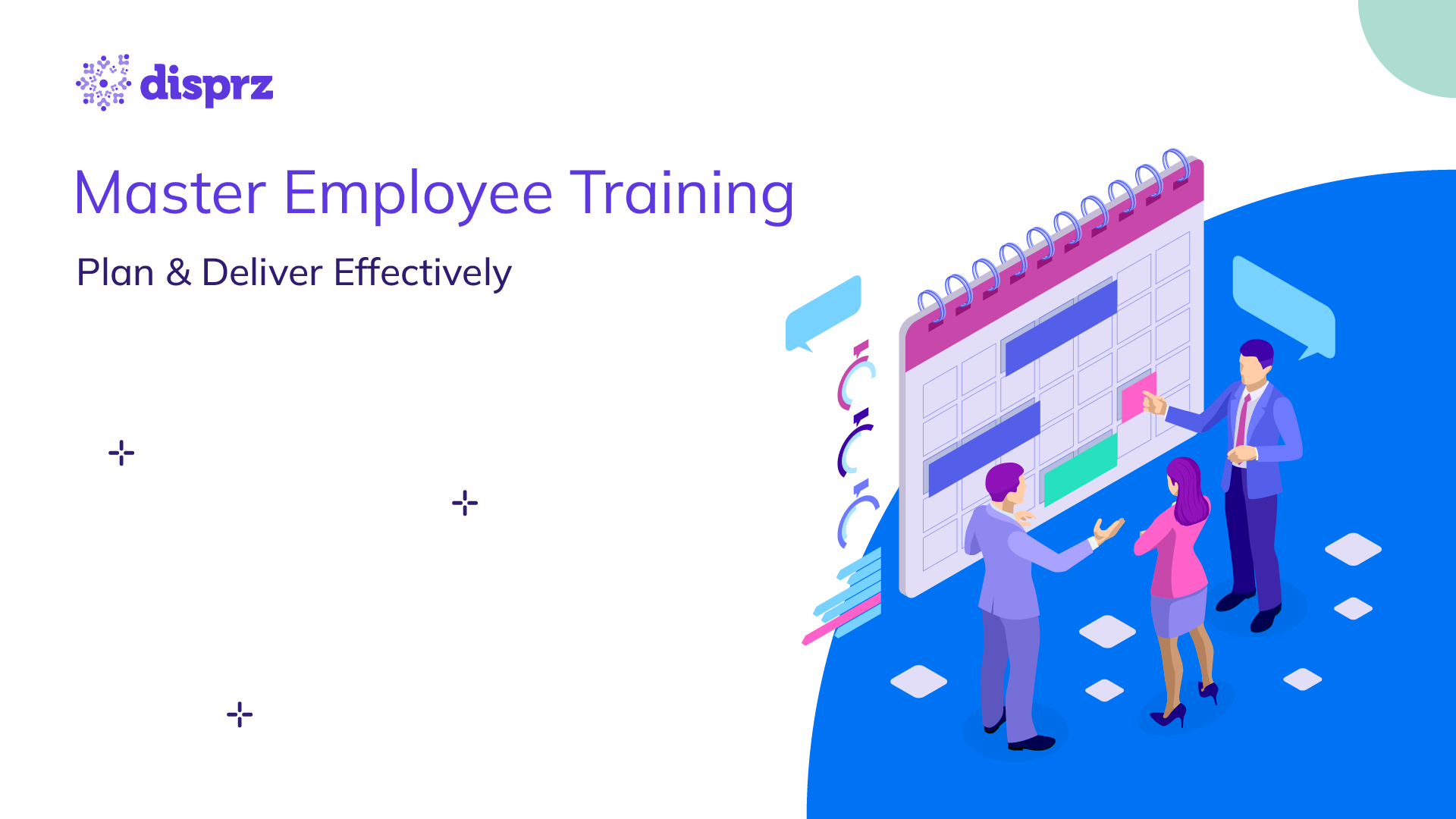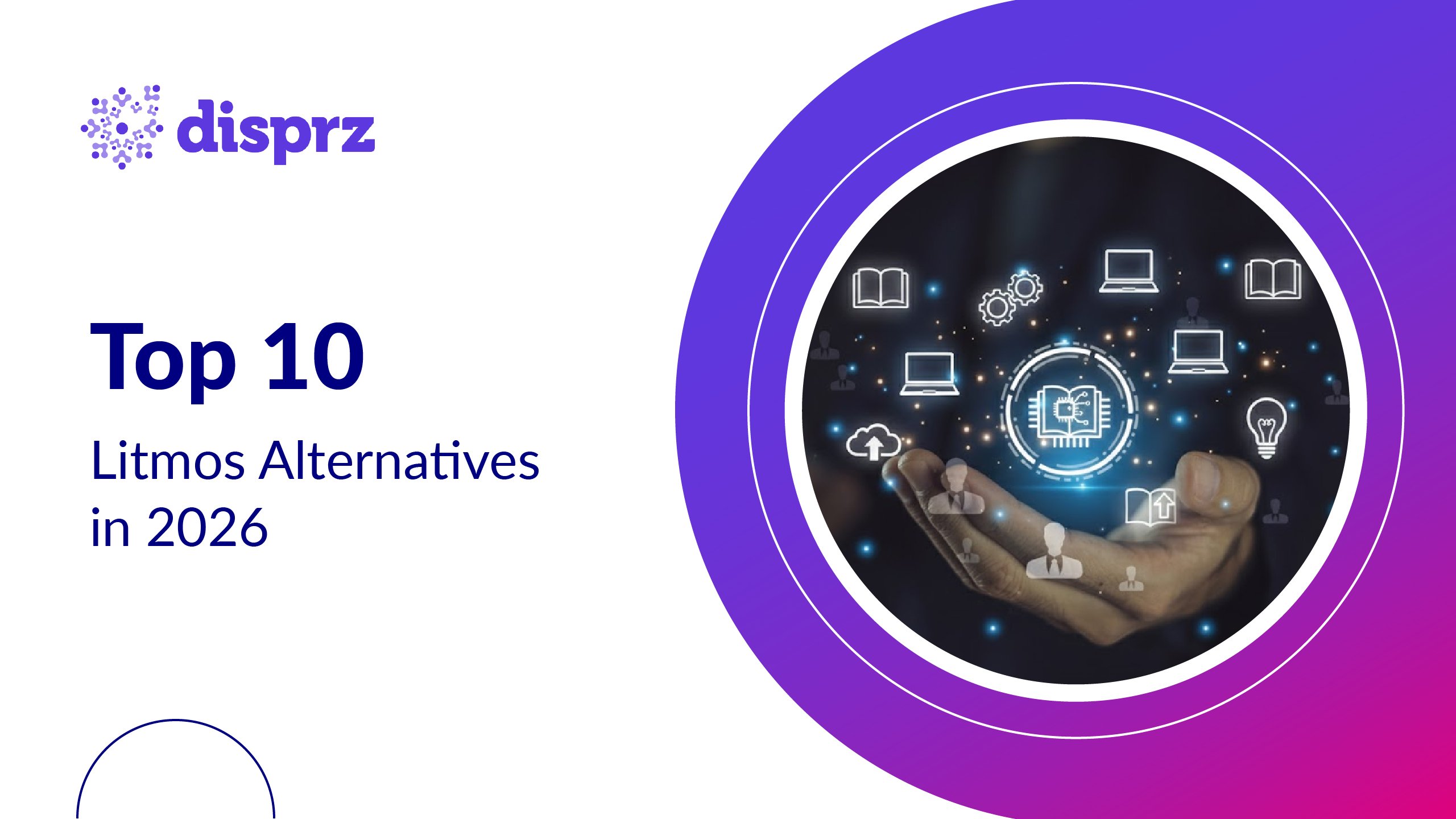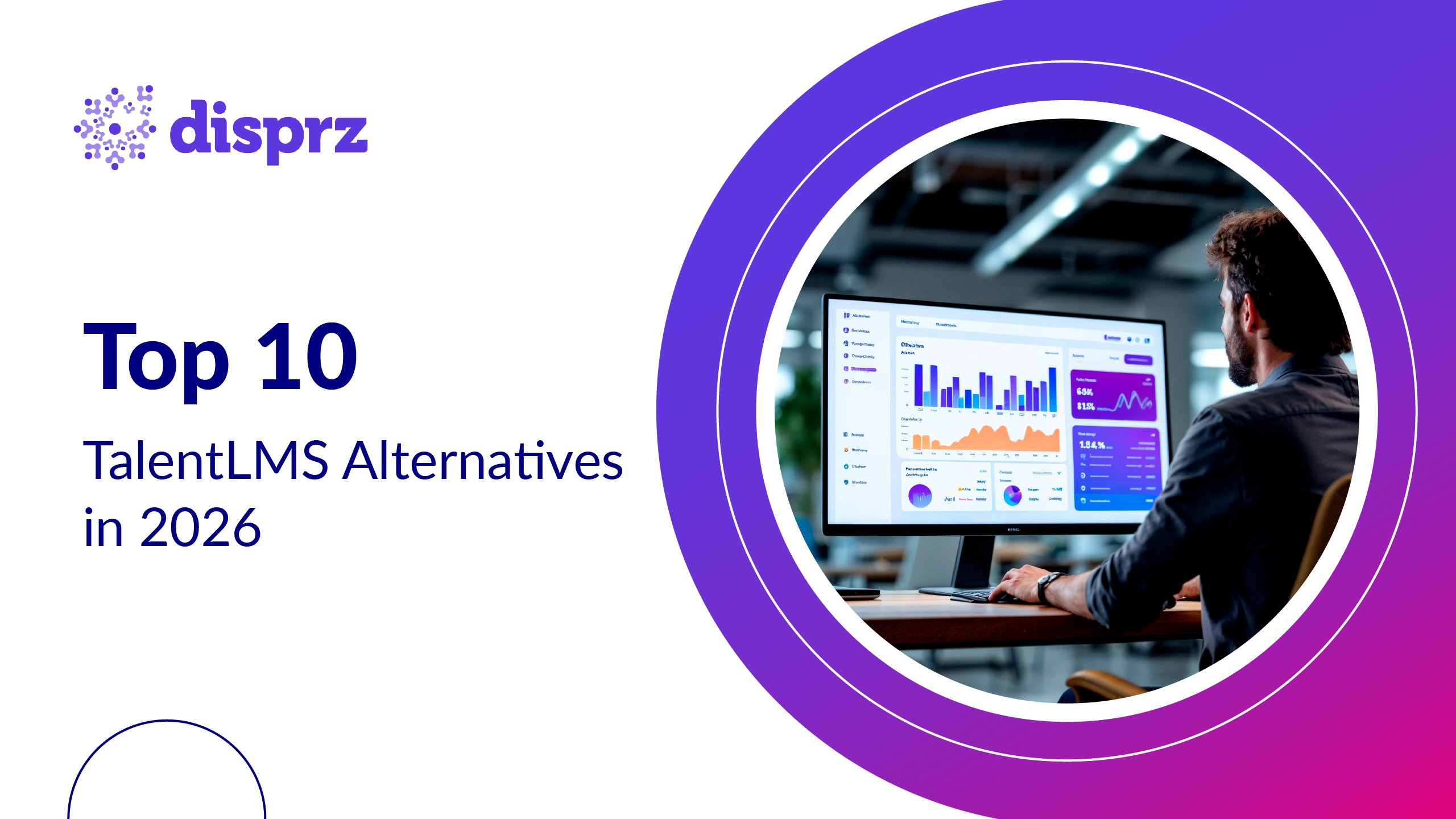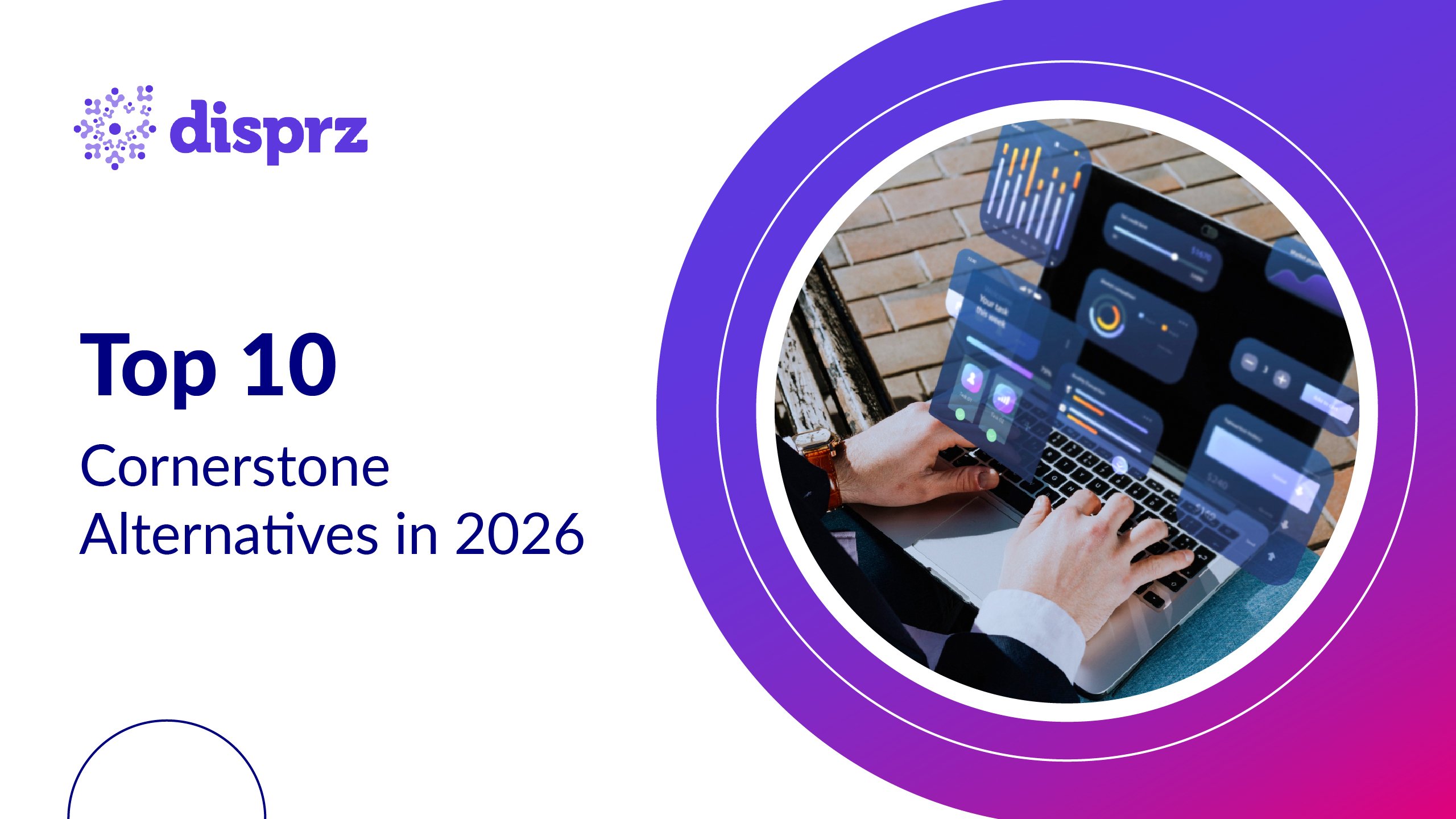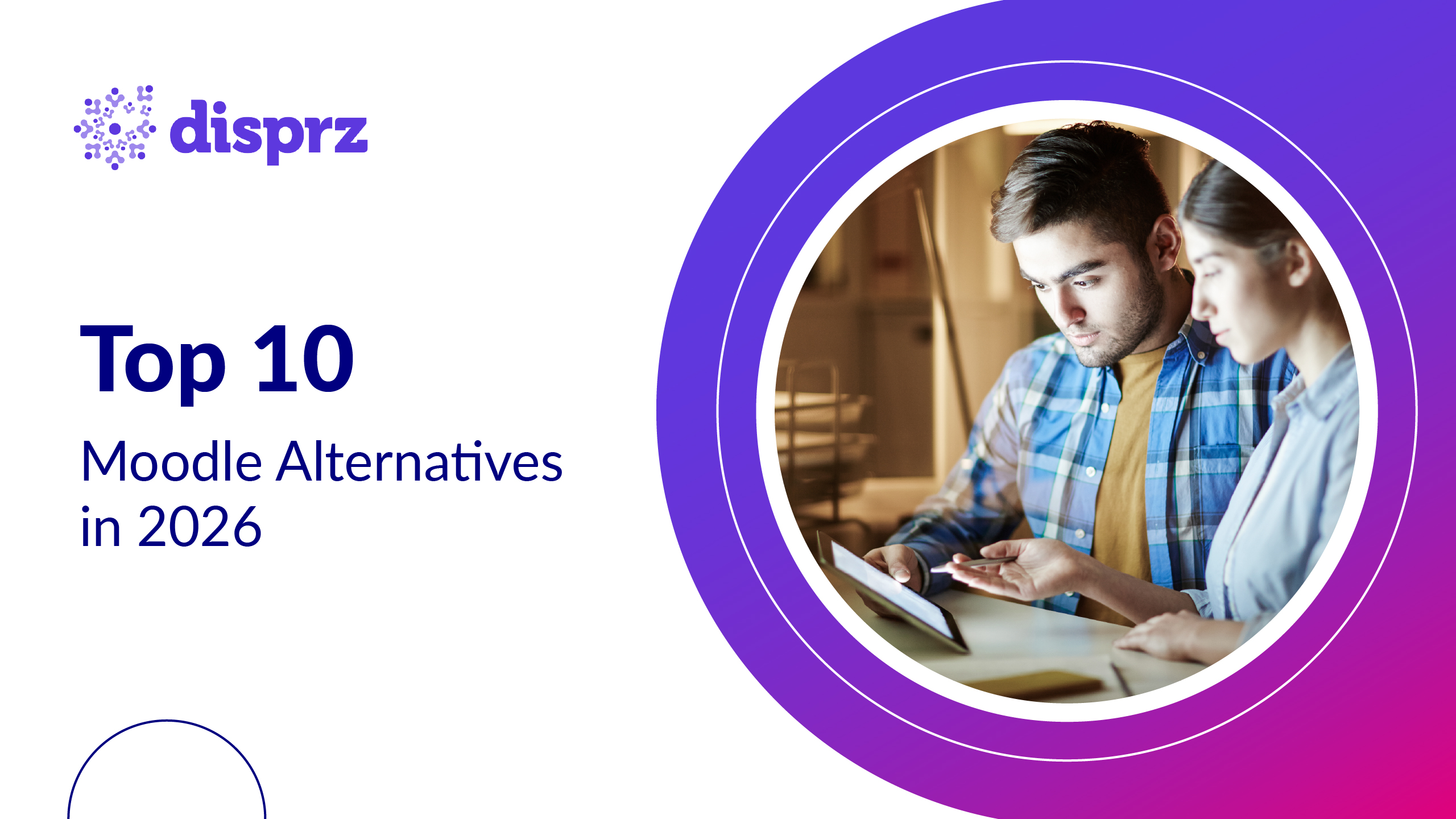An employee training program is not just a “nice-to-have” for companies. A strong, personalized learning and development program increases productivity, reduces costs, and is a critical factor in the overall success of your business.
Your business must adapt to keep up and thrive in today’s competitive and continuously evolving environment. The best way to accomplish this is by upskilling your employees and equipping them to successfully handle change and transformation.
Employee training programs need to be relevant, effective, and personalized and address skill gaps. While this can be costly, leveraging AI and implementing modern learning tools will significantly increase your ROI.
What is an Employee Training Program?
Employee training program initiatives are carefully organized efforts designed to boost staff abilities, expertise, and competencies within a company. These programs enable team members to build on existing skills, learn new techniques, and enhance their work output.
Training covers diverse areas, including technical aspects related to specific roles and essential soft skills such as teamwork, communication, and leadership abilities. The primary aim of these employee development programs is to elevate both individual and group performance levels, resulting in greater efficiency, increased job satisfaction, and enhanced overall organizational success. By investing in these efforts, companies strive to create a well-rounded and capable workforce that can adapt to changing demands and contribute effectively to the business's goals and growth.
Benefits of Implementing Quality Training Programs for Employees
Implementing quality training programs for employees enhances skill development and boosts productivity. It also increases job satisfaction and contributes to overall business success.

Boosted Efficiency
Well-structured training programs are essential for improving efficiency in any workplace. By ensuring that team members gain the skills and understanding required for their roles, they can complete tasks accurately and swiftly. Such programs also optimize operations by minimizing errors and refining workflows.
As staff become proficient in their responsibilities, time wasted is reduced, and overall processes are made smoother. This leads to faster task completion and significantly raises efficiency levels throughout the company, resulting in a more productive work environment where team members can maximize their output with confidence.
Elevated Staff Involvement
Comprehensive training programs are crucial for enhancing employee involvement and commitment. When staff have opportunities to develop personally and professionally, they become more connected to their roles and the business. This growth encourages team members to become proactive, enthusiastic, and motivated, showing dedication towards their work.
Highly engaged employees are more likely to take responsibility, contribute innovative ideas, and consistently strive to meet or exceed objectives, driving the organization's success and fostering a positive workplace culture.
Lowered Employee Attrition
Comprehensive training programs play a key role in minimizing employee attrition rates. When businesses prioritize professional development, staff members feel valued and appreciated, fostering a sense of belonging and commitment. Employees see that their growth is a priority for the company, leading them to feel motivated and supported in advancing their careers.
This perception enhances job satisfaction, encouraging employees to stay longer. Consequently, retention rates improve, which not only reduces expenses related to hiring and onboarding new talent but also preserves expertise and continuity within the organization, promoting a stable and cohesive workforce.
Flexibility in Adapting to Change
In today’s fast-paced business world, adaptability is essential. Well-designed training initiatives equip staff with the necessary tools to handle changes, whether they relate to technological advancements, market developments, or structural changes within the company.
Employees who receive continuous skill enhancement are more adaptable and prepared for shifts, increasing their ability to manage new challenges effectively. This readiness ensures that the organization stays nimble, competitive, and responsive to evolving business demands, maintaining a strong position in the market.
Gaining a Competitive Edge
Establishing comprehensive training initiatives provides companies with a distinct edge in their industry. A workforce that undergoes quality training develops advanced skills, creativity, and a strong customer-centric approach. Such employees are more capable of delivering superior services or products and are better positioned to respond to market shifts and evolving customer expectations.
This adaptability enables the company to differentiate itself from rivals, drawing in top professionals and building a loyal customer base. Additionally, it promotes sustained organizational growth and success, ensuring that the business remains a leader within its sector and continues to thrive amidst competition.
Effective Employee Training Program Examples 2025
In 2025, organizations are increasingly adopting innovative employee training programs customized to enhance skills, engagement, and productivity. These training programs for employees leverage technology, personalization, and interactive methods to address evolving workforce needs effectively.
Personalized Learning Pathways
Companies are increasingly using AI-personalized platforms to create personalized training programs tailored to each employee’s role, skills, and development needs. For example, a software company may design individual learning paths for developers, focusing on specific coding languages or project management skills, while offering separate tracks for marketing or sales staff.
Microlearning Modules
Short, focused learning segments delivered through mobile apps or Learning Management Systems (LMS) are gaining popularity. Employees can access bite-sized lessons, quizzes, or video tutorials on-demand, making it convenient to learn and upskill without disrupting daily work routines. For instance, hospitality businesses often provide micro-courses on customer service techniques or food safety procedures, accessible via smartphones.
Gamified Training Programs
Gamification has become an effective tool for engaging employees in training. By incorporating point systems, leaderboards, and rewards, organizations can motivate employees to complete learning modules enthusiastically. A retail company might use gamification for sales training, where employees earn points for correctly identifying customer needs or recommending appropriate products.
Virtual Reality (VR) and Augmented Reality (AR) Training
Immersive training using VR and AR technologies allows employees to practice real-life scenarios safely. For example, manufacturing firms use VR simulations for safety training, where employees navigate potential hazards without facing real-world risks. Healthcare organizations also use AR for training medical staff, providing interactive, 3D models for anatomy lessons or surgical procedures.
Top 5 Challenges in Creating a Successful Employee Training Program
Here are several common challenges faced by Learning and Development (L&D) teams when developing training initiatives for employees:

1) Gaining Employee Commitment
Securing employee commitment is essential when implementing a new training initiative. It’s important to clearly communicate the purpose and expectations to ensure full participation. Without employee commitment, the effectiveness of training efforts can be diminished, leading to reluctance and making the program seem burdensome.
2) Evaluating Program Effectiveness
L&D teams often struggle with quantifying the impact of training efforts on the organization. Determining the right metrics, integrating them into evaluations after training, and following up to adjust future initiatives can be complex and time-consuming. It requires a strategic approach to link learning outcomes with measurable organizational improvements.
3) Managing Remote and Hybrid Teams
With the increase in remote and globally distributed teams, new hurdles have emerged. Coordinating training for employees across different locations is difficult due to time zone variations, language barriers, cultural nuances, and the absence of in-person interactions, all of which can lead to misunderstandings.
4) Integrating Training into Daily Work
Balancing professional development with regular job responsibilities can be challenging for employees who already strive to maintain work-life balance. Allocating additional time for training sessions outside their usual tasks may create resistance, as it can be perceived as an added burden.
5) Keeping Training Content Relevant and Engaging
Another significant challenge is ensuring that training content remains relevant and engaging for employees. L&D teams must continuously update materials to align with industry trends, emerging technologies, and evolving organizational needs. Outdated or unengaging content can result in low participation rates and disengagement, making it difficult to achieve the desired learning outcomes. Moreover, creating interactive and appealing training experiences that captivate employees' interest and maintain their motivation requires substantial time, effort, and resources.
6 Steps To Plan and Deliver an Employee Training Program
A truly effective employee training program must be designed to ensure that it meets the needs of your business, addresses existing gaps, and aligns with strategic goals. Let’s take a look at how you can thoughtfully execute your program

1) Perform Initial Assessments
Evaluate your current learning and development processes to determine what’s working well versus what needs work. This is a good opportunity to confirm if any of your existing materials can be repurposed.
At this stage, you should assess employee skill gaps and determine what they need to learn to excel in their role and beyond.
2) Define Training Program Goals
Clearly determine what you would like to accomplish through your training programs. These will be your main goals, which you’ll want to break down into smaller, measurable sub-goals.
An important part of this step is to reflect on how the goals for your training program will be aligned with your strategy and business goals and how you can leverage them to drive results.
3) Determine a Budget
Setting a budget for learning and development will help you determine your plan of action, tools, and approach to ensure you can deliver the highest level of impact within your budget.
4) Build Your Employee Training Plan and Content
You’ll want to create a training plan that aligns with your goals and budget. And that effectively addresses the needs of your initial assessment.
A one-size-fits-all approach won’t work. You’ll want to offer diverse content, a variety of learning opportunities, and a blend of different approaches to provide a personalized learning experience that meets each employee’s unique needs and learning style.
For original content, you can outsource this step or get help from subject matter experts who can provide input and feedback to ensure your content is rich, comprehensive, well-structured, and digestible. You can also leverage content curation tools to provide a large amount of content to train your employees.
Outlining your learning goals for each training item at this stage will also ensure the content is relevant and outcomes are easier to measure.
5) Communication and Implementation
It’s important to communicate your plan, and the goals and expectations related to your training program. Reinforce their importance by making sure managers carve out time for employees to focus on training during work hours and follow up on this.
Ensuring that the entire management and executive team supports the program and takes their role in implementation seriously is key.
6) Evaluate, Get Feedback, and Improve
It’s critical to continuously measure progress by tracking outcomes, gathering employee feedback, and revisiting processes to evaluate success and continue to improve and adapt your training programs over time.
How to Integrate your Training Plan with your LMS
Integrating your employee training plan into an LMS optimizes the entire learning process. It enables streamlined management of training content, efficient tracking of employee progress, and seamless delivery of online courses.
To effectively integrate your training plan into an LMS, follow these steps:
Select an LMS That Matches Your Organizational Requirements
Choose an LMS compatible with your company’s specific objectives and learning needs. Evaluate various platforms based on functionality, user experience, and scalability to ensure they support the scope and goals of your training programs.
Develop Training Content Within the LMS
Utilize your LMS platform to design and structure your training materials. Use multimedia elements, interactive tools, and assessments available within the LMS to create engaging, comprehensive training content tailored for your learners.
Assign Courses and Communicate with Learners
Distribute the prepared courses to your employees and inform them through the LMS’s communication tools. Automated notifications can be set up for assignments, deadlines, and reminders, ensuring learners are aware of their responsibilities and timelines.
Track Learner Progress and Measure Completion Rates
Use the analytics and reporting features of the LMS to observe learner engagement and assess their progress. Monitor metrics such as course completion rates, assessment scores, and participation levels to gain insights into the effectiveness of the training and identify areas for improvement.
Enhance Your Training Program With Technology
Enterprise learning management systems leverage AI to offer personalized learning and development opportunities in your employee training programs in the following ways:
-
Takes over the admin work by mapping out the learning journey of each employee and tracking their progress, certifications, and skills
-
Creates an agile, personalized experience that can offer learner-specific recommendations as needed
-
Provides recommendations for new employees based on data, from what was beneficial to previous employees on a similar journey
-
Saves costs through automation rather than having to keep trainers on hand at all times
-
Makes training more fun and engaging – It can integrate training into the daily workflow in small, digestible chunks that are quizzed and rewarded at each step. The employee gamification aspect helps drive motivation, engagement, and better knowledge retention.
-
By leveraging virtual platforms to create their training programs, organizations can ensure an inclusive
Learn More
A strong employee training program helps you attract and hold onto top talent, and boosts productivity, engagement, and retention, which reduces costs related to errors or turnover.
If you’re ready to find out more about how an enterprise learning management system can help you design an effective employee training program that drives better business results,
Schedule a demo with Disprz today.



